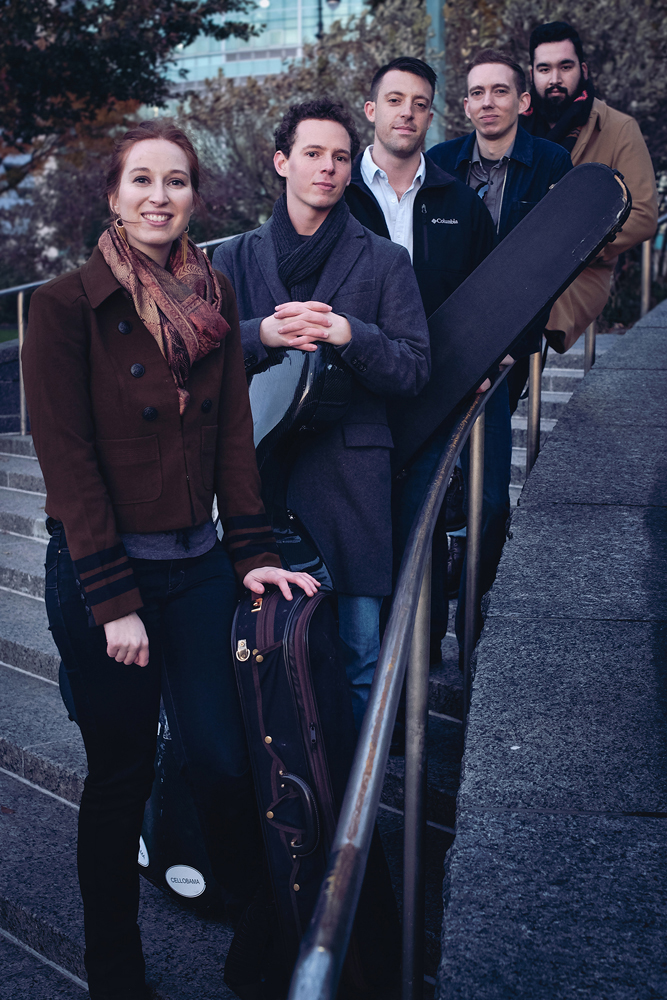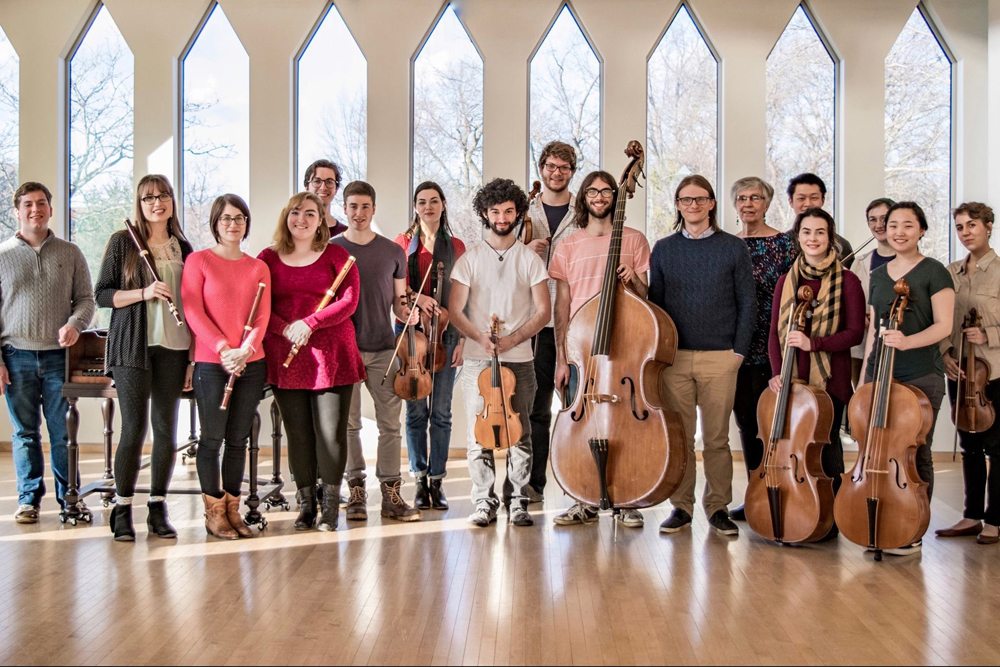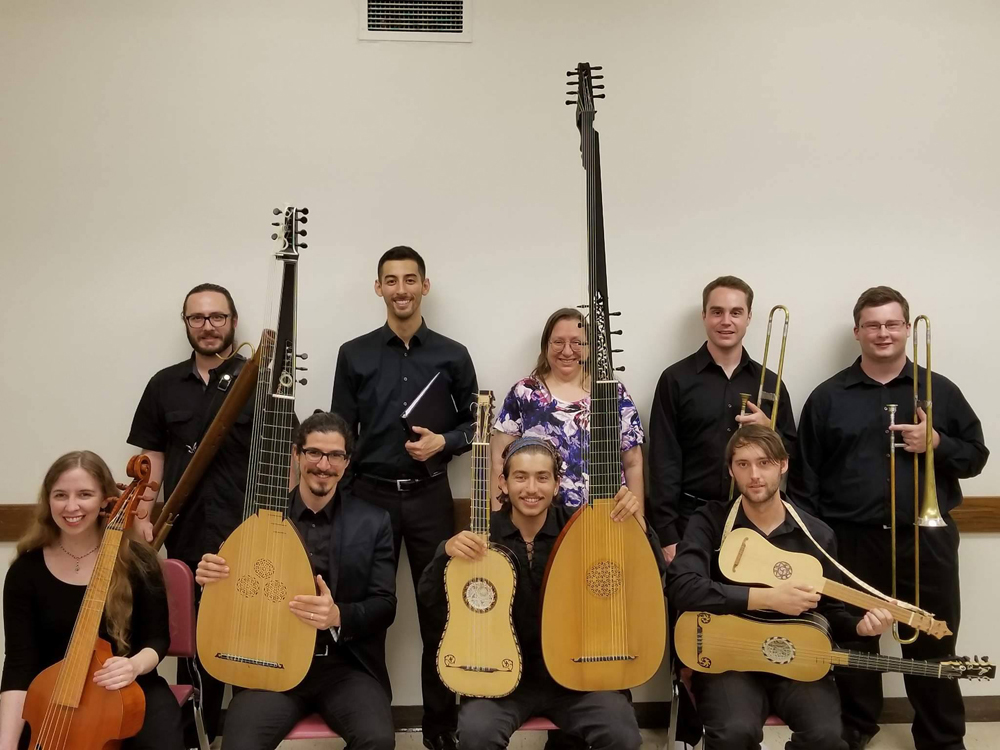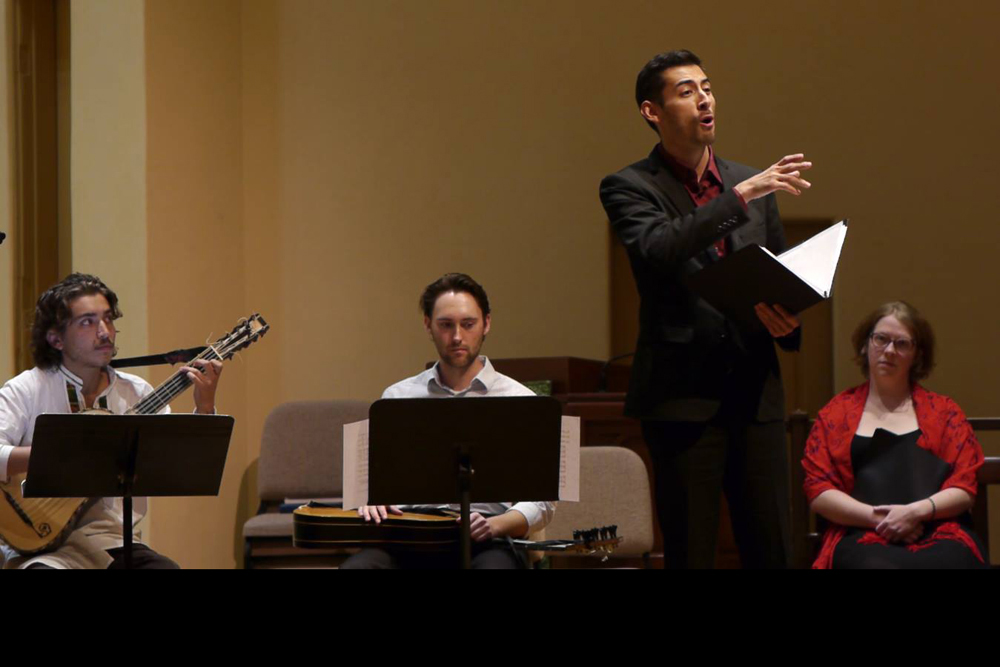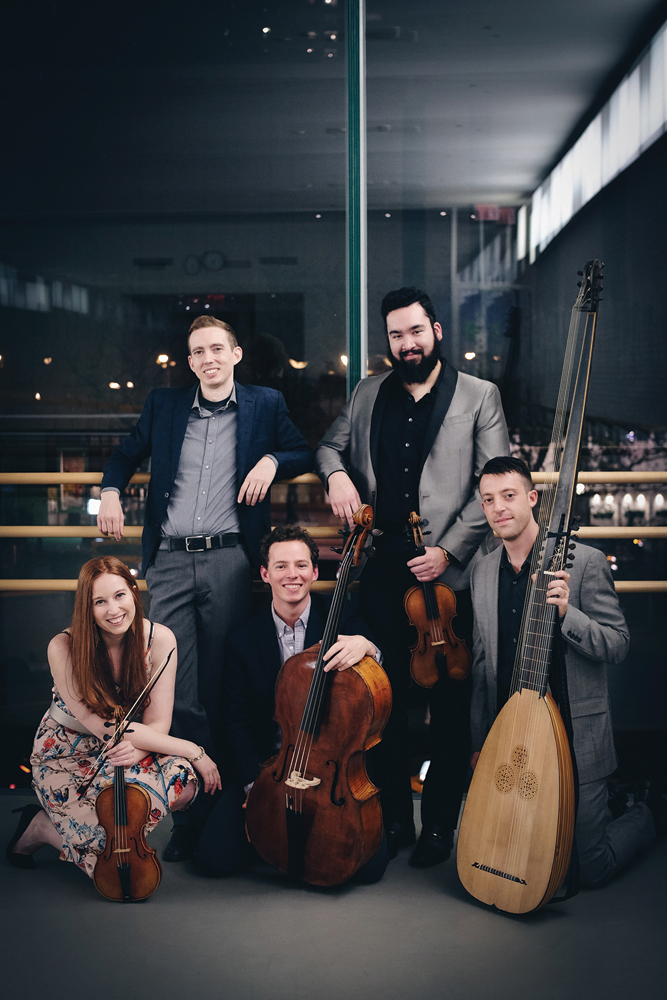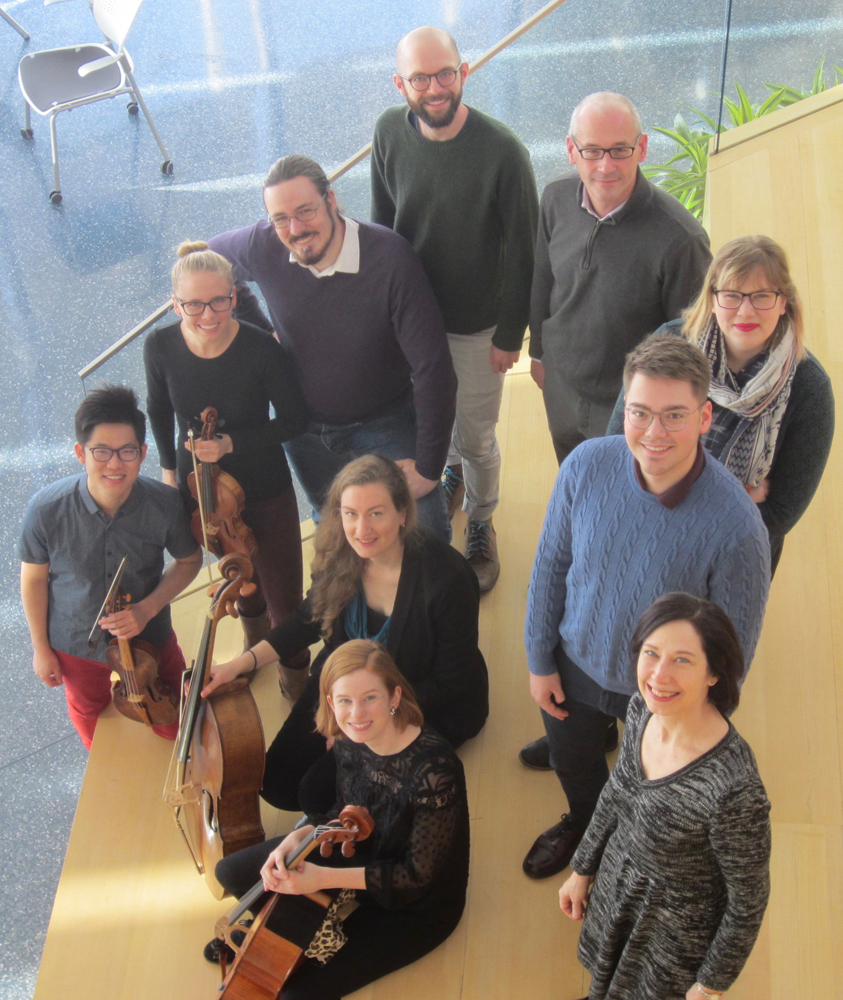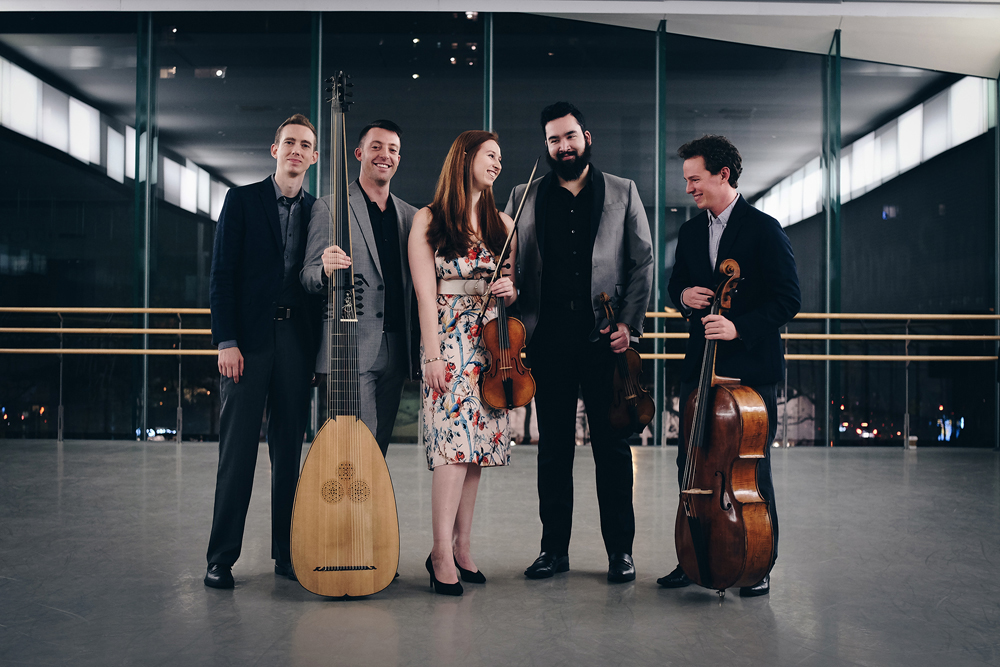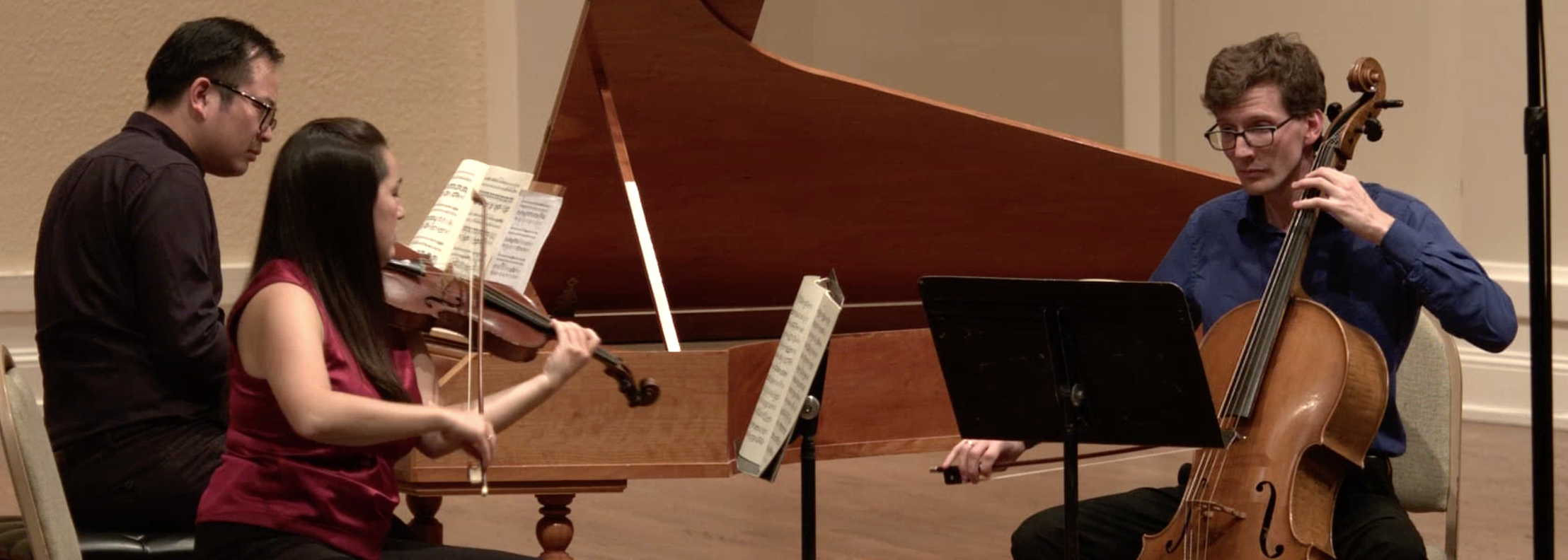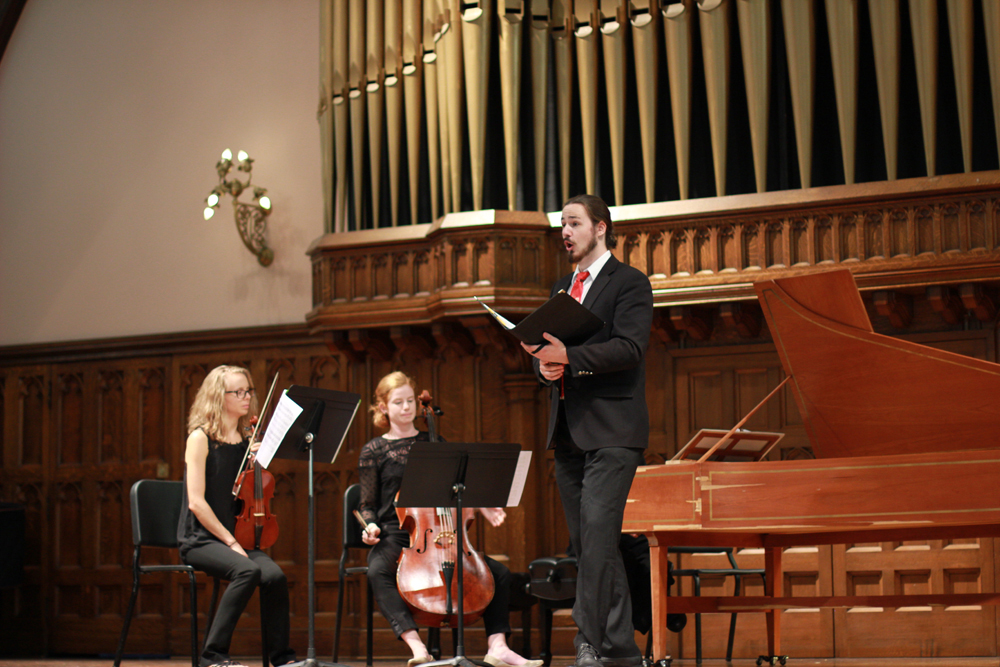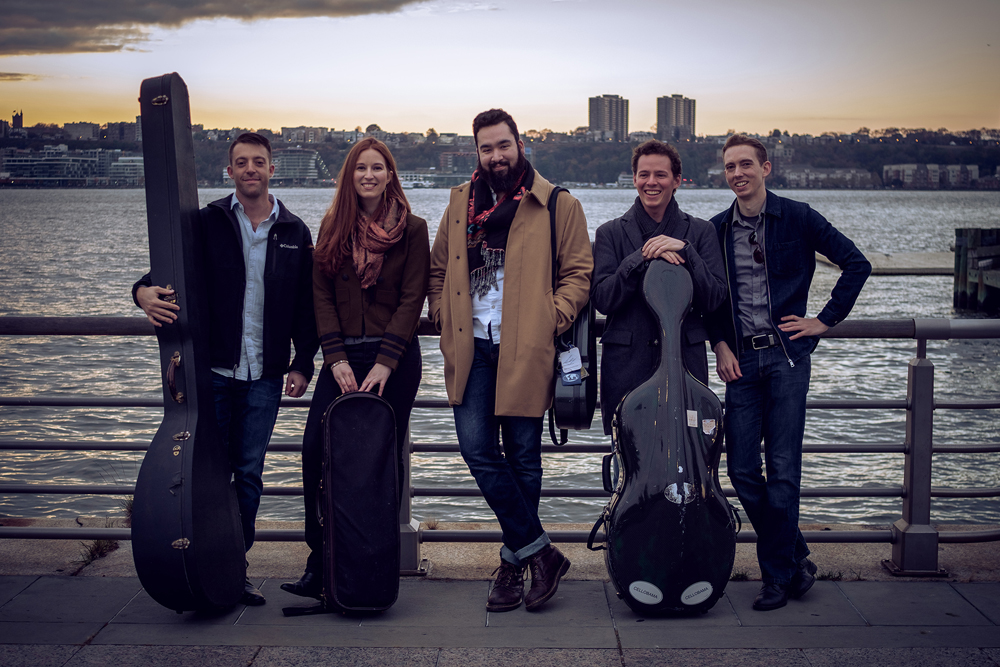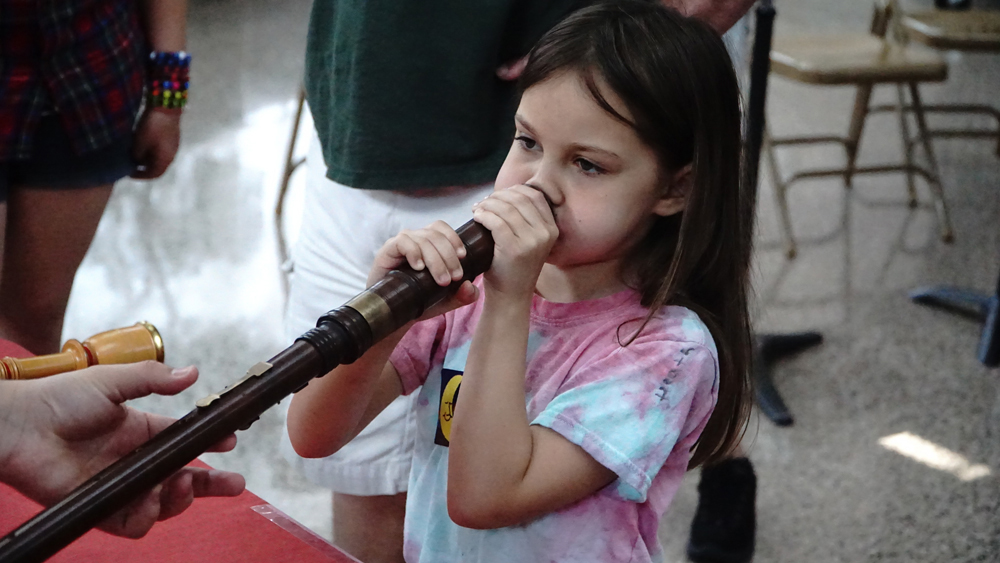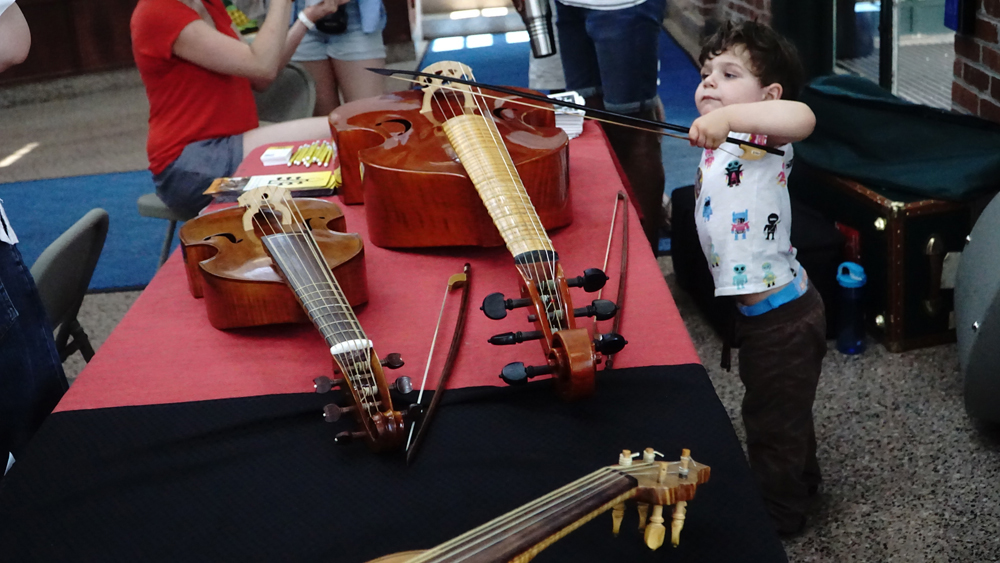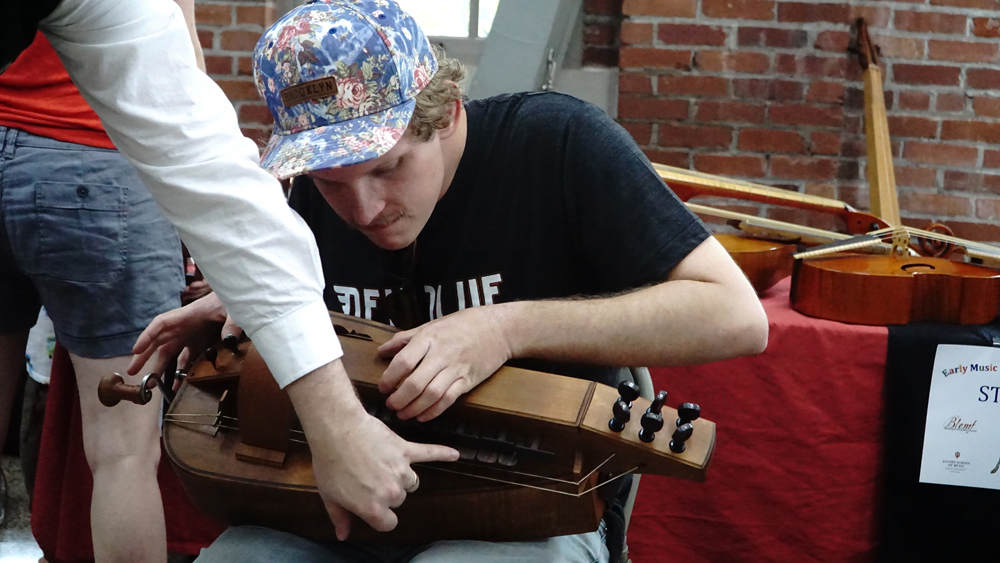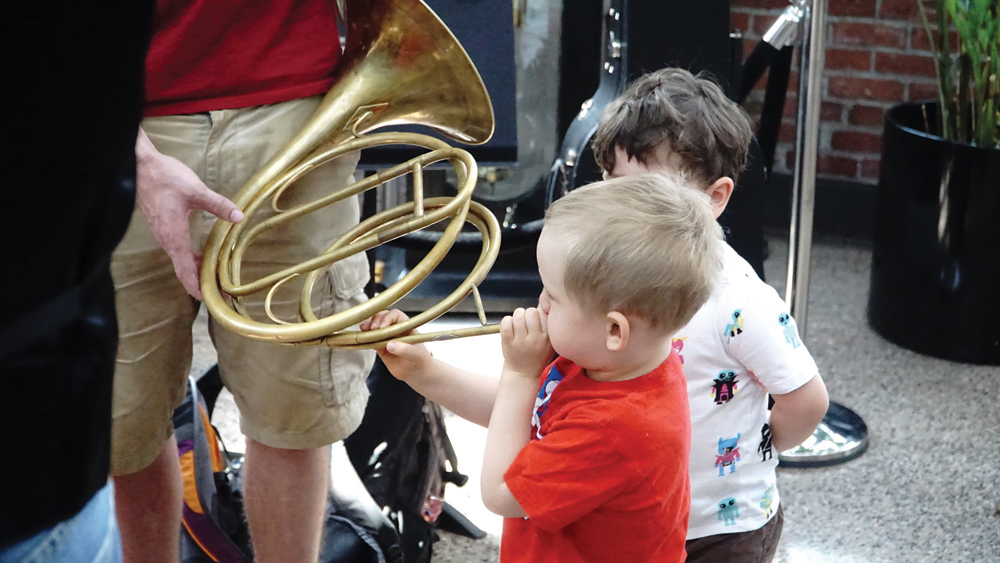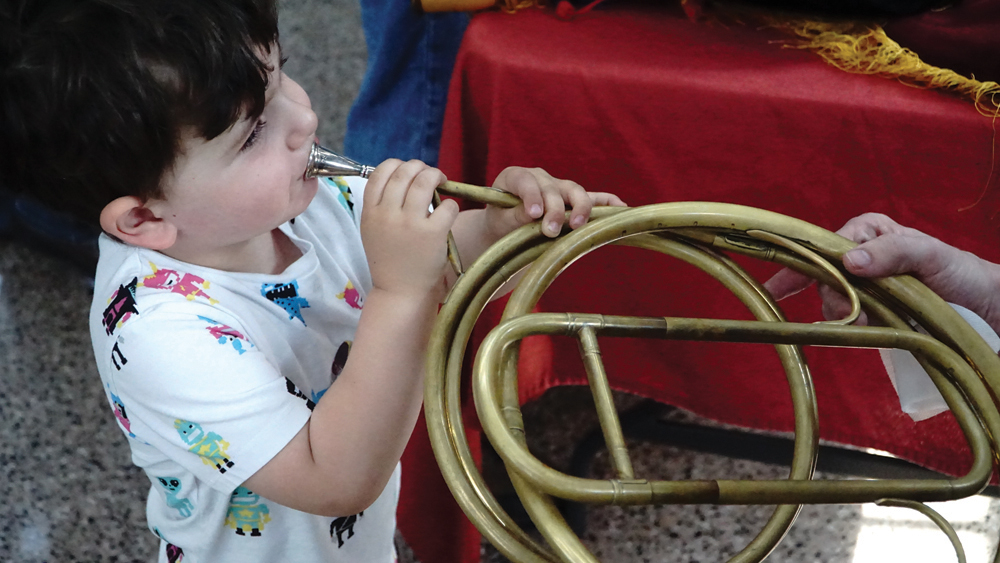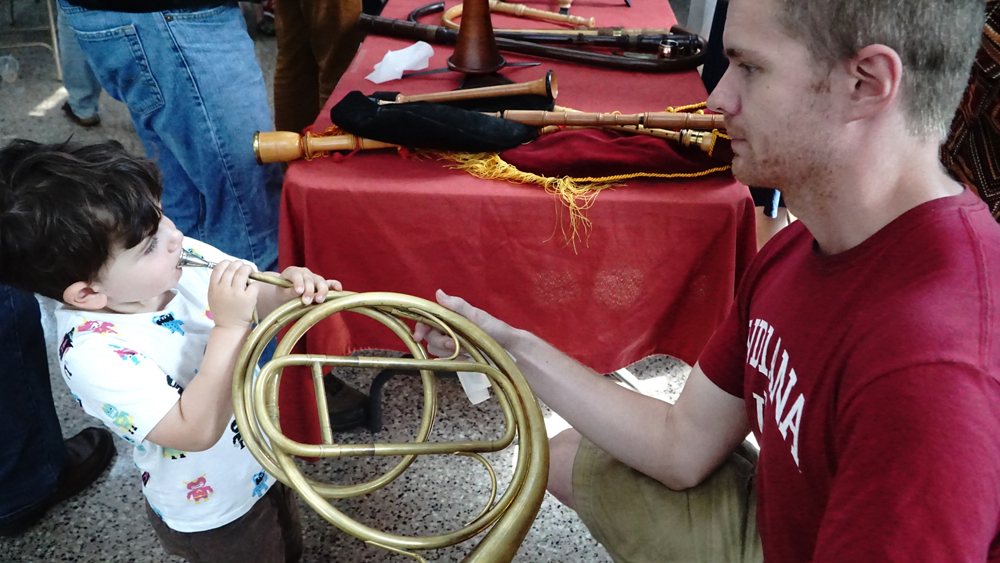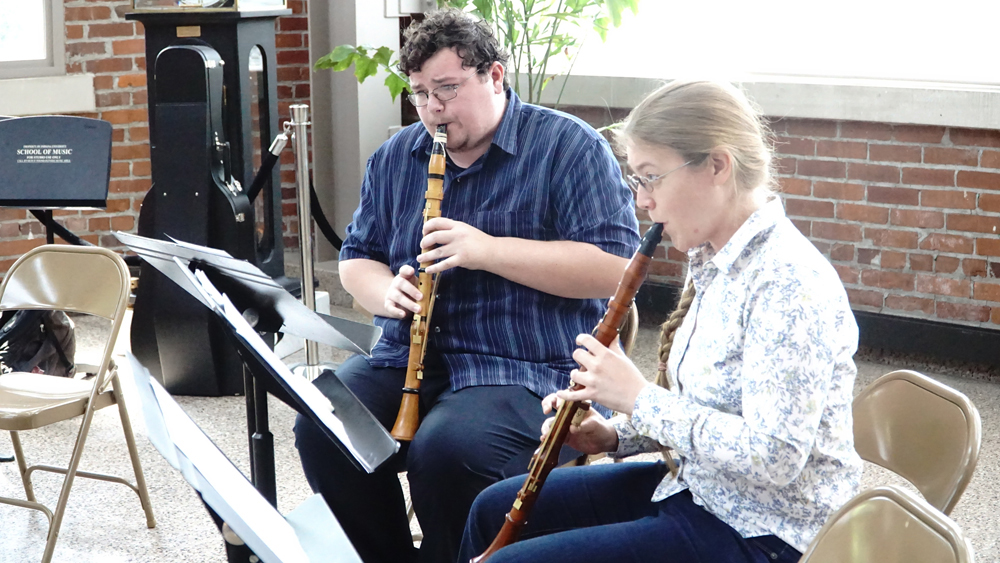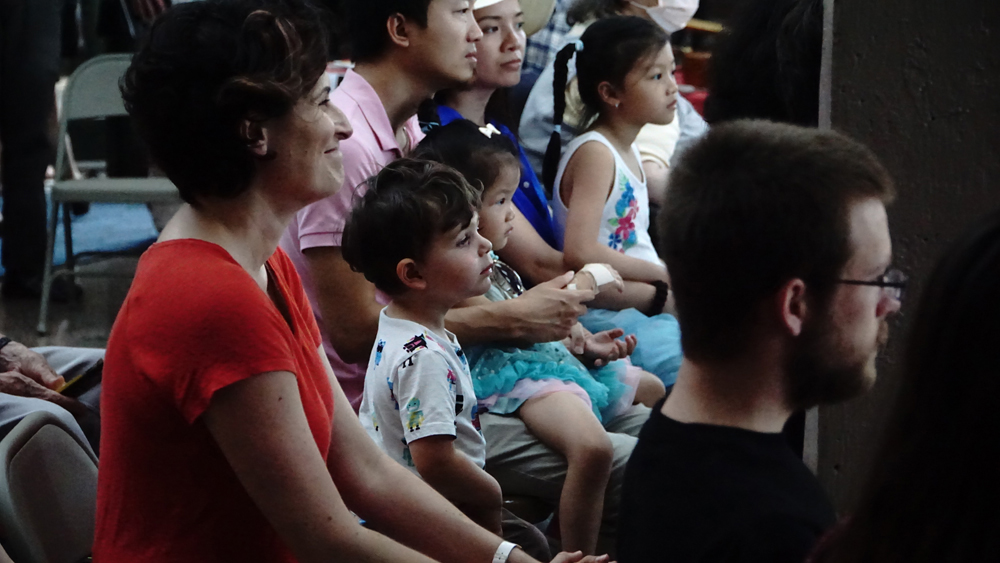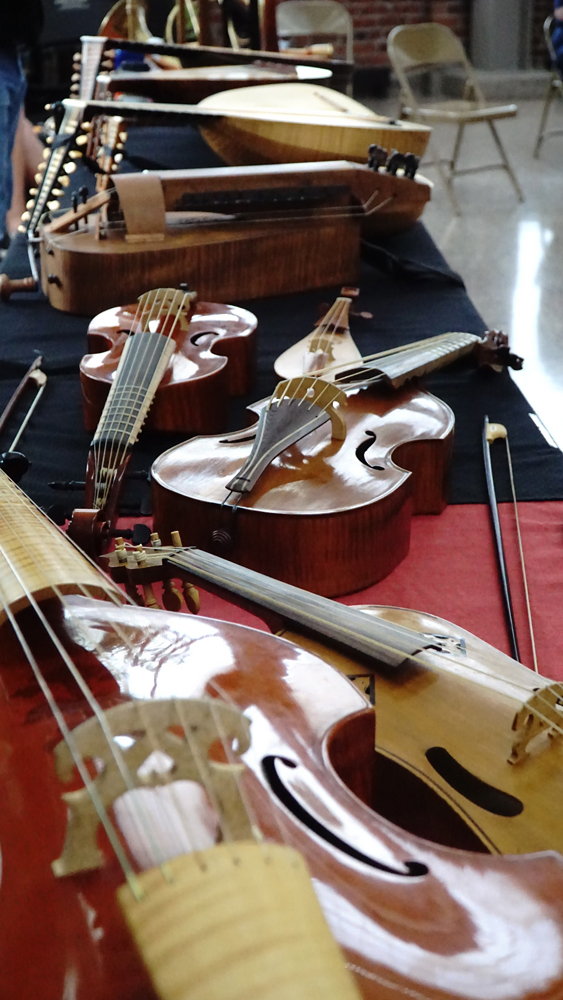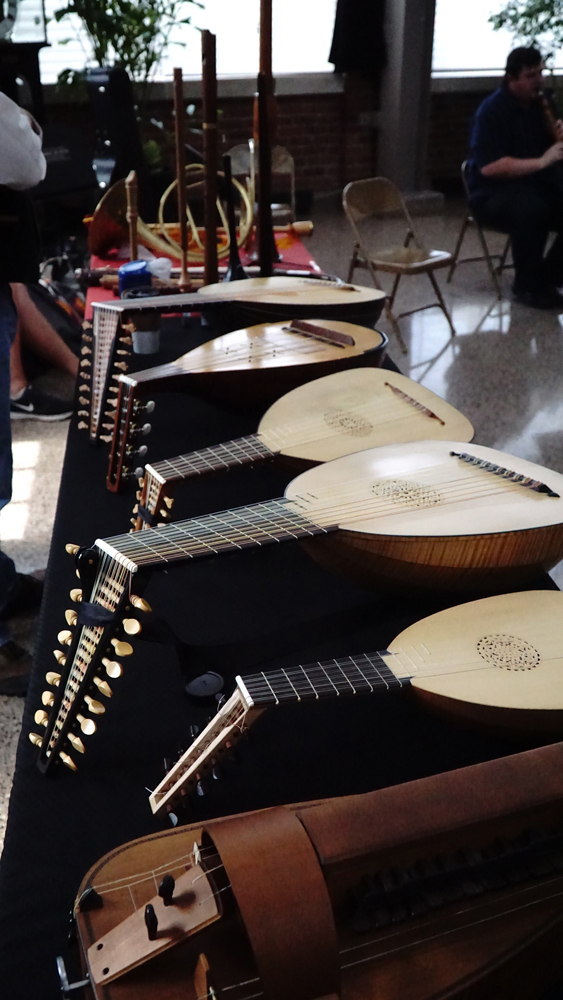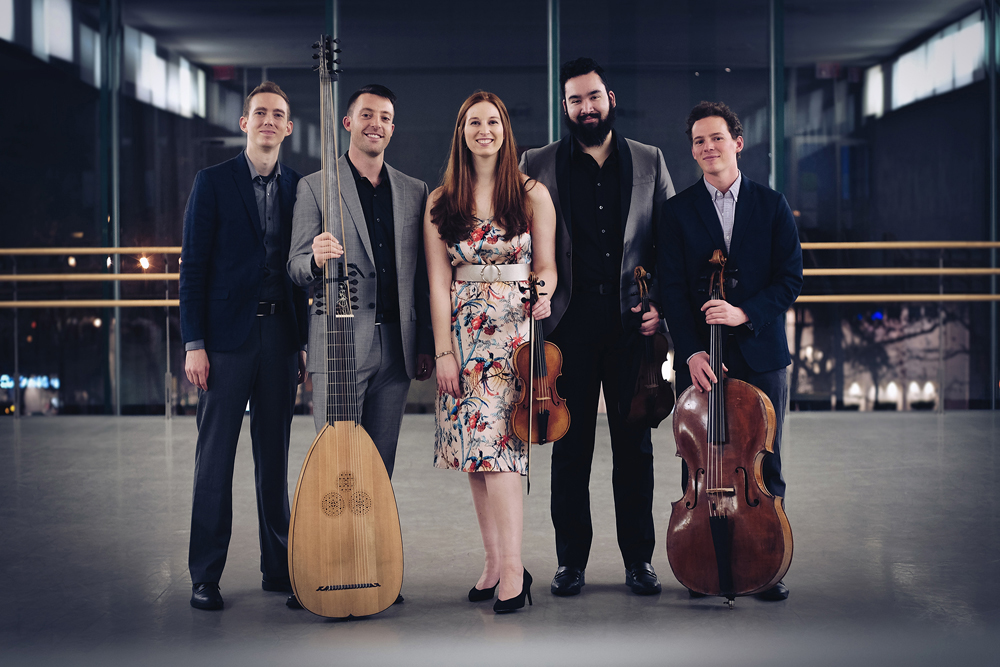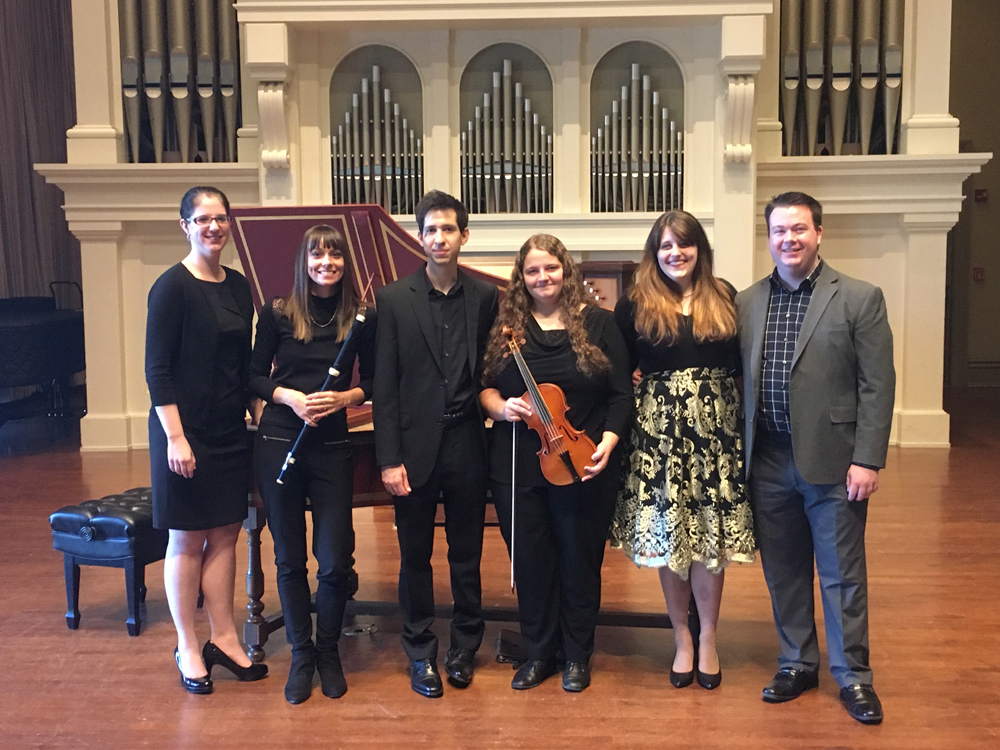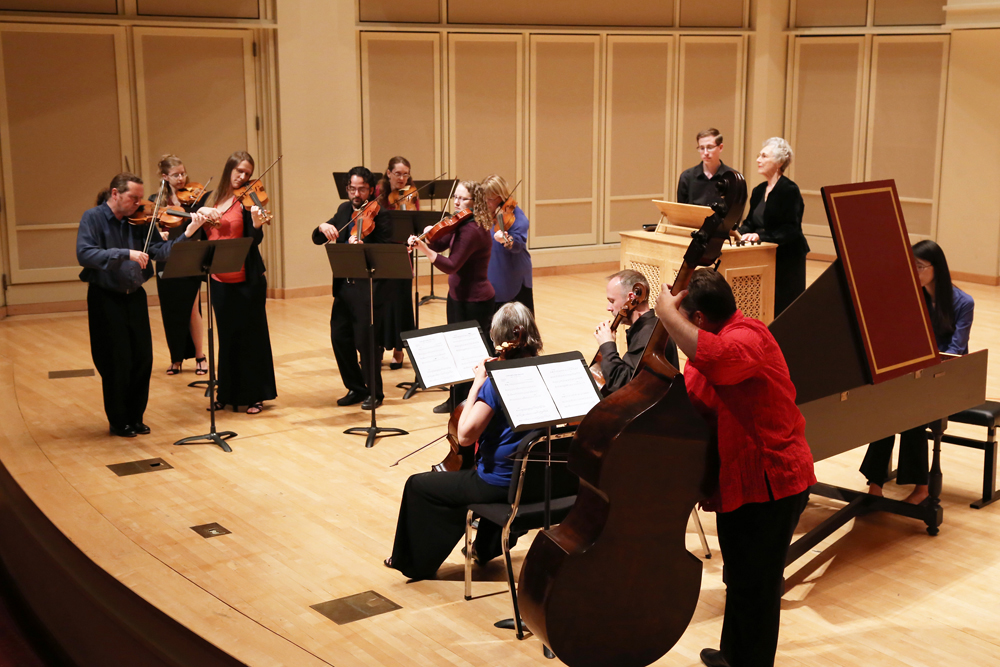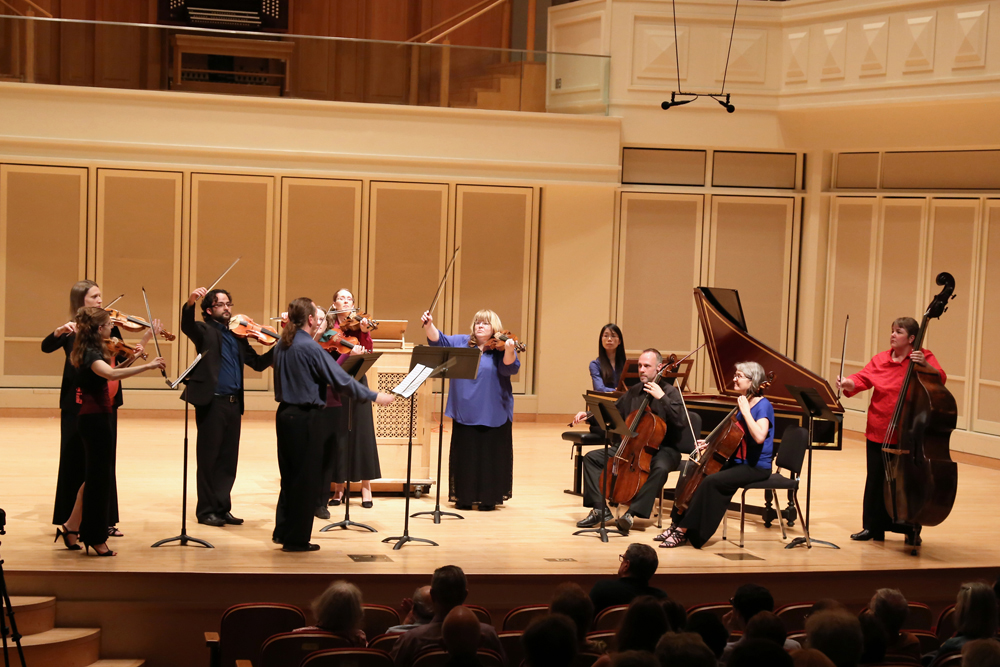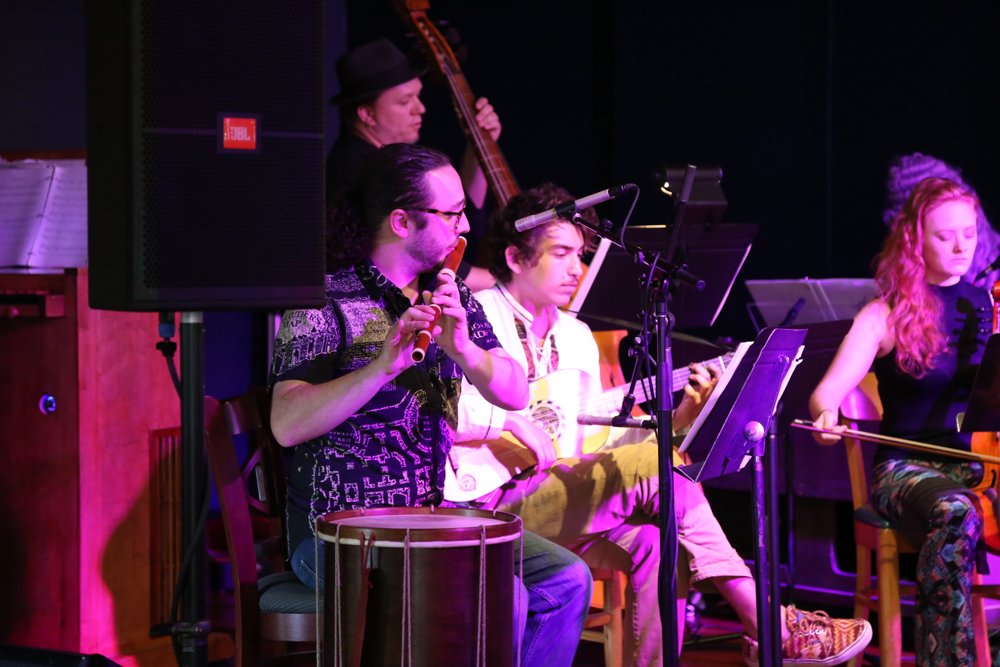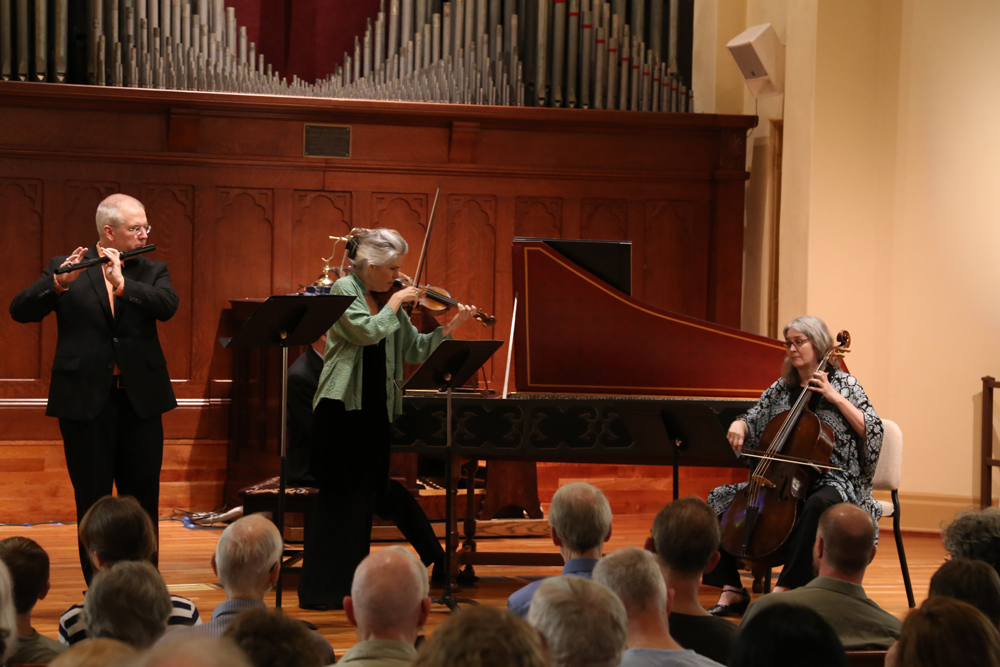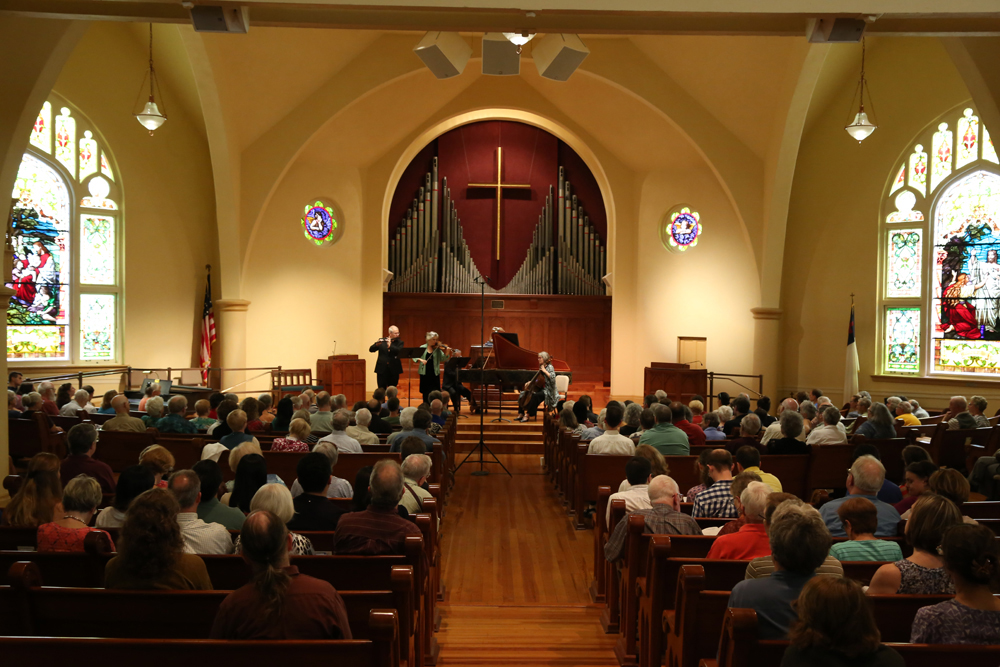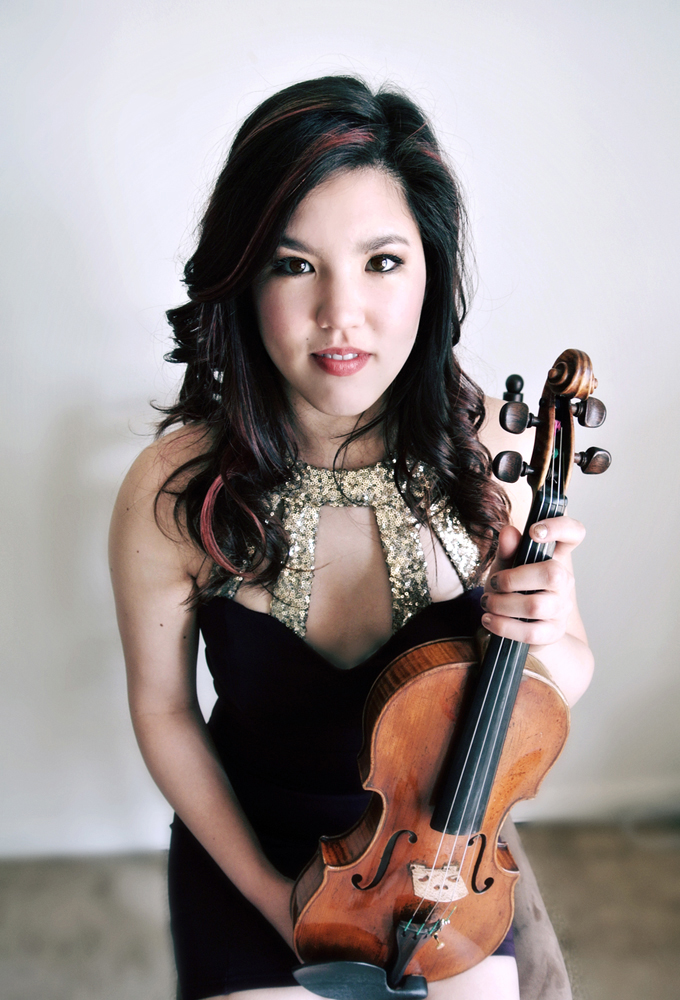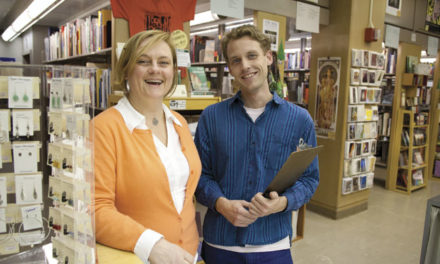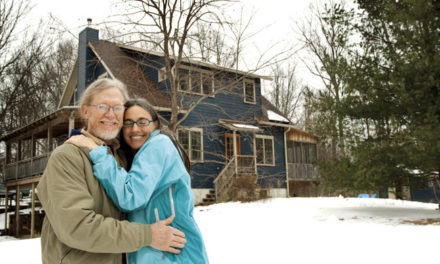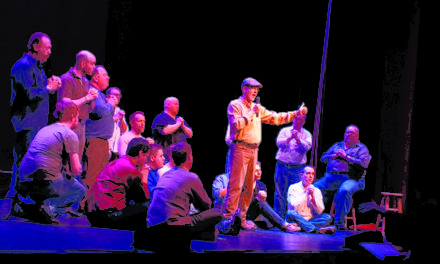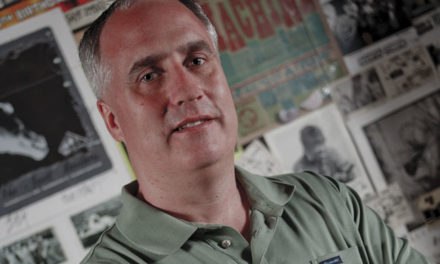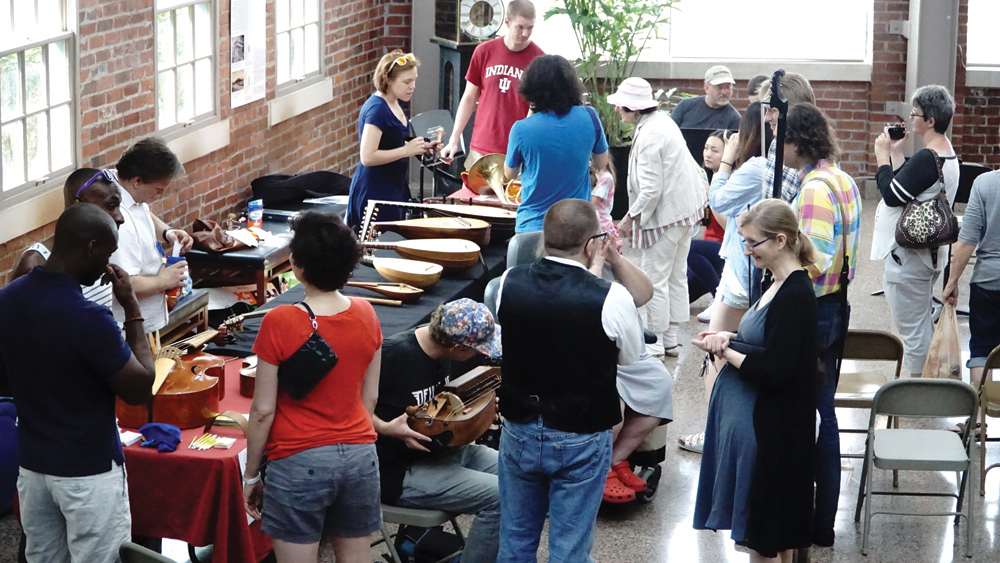
Visitors examine instruments old and new at the 2017 instrument petting zoo inside City Hall during the Bloomington Community Farmers’ Market. Courtesy photo
BY CRAIG COLEY
Bach and his contemporaries would be surprised if they were to attend modern concerts of their works. The baroque style of performance was different, as were the instruments themselves—string instruments, for example, were constructed with animal intestines, not steel, and bows were of a different design. But Bloomington audiences will be able to hear something closer to what the composers intended during the Bloomington Early Music Festival May 18–27.
“This is what Mozart would have experienced directly in his own hometown,” says Alain Barker, president of Bloomington Early Music, the nonprofit organization that puts on the festival. Barker anticipates that some people assume a “historically informed performance” of this kind will be a staid, museum-like experience. On the contrary, he insists. “There’s a directness to it that is just extraordinary. It feels more organic, more expressive, more accessible.”
“It’s just direct from the heart,” says Dana Marsh, director of the Historical Performance Institute at the Indiana University Jacobs School of Music. The institute’s annual conference, May 18–20, dovetails with the festival, and several of the conference’s performances will be open to the public. Practitioners of early music are scholars as well as musicians, since performance techniques must be gleaned from each period’s written sources.
“I’ll never forget the first time I was ever in a Handel performance with period instruments,” Marsh says. “It was like, ‘Wow! This is a whole other world. It makes so much more sense.’ It was a conversion experience.” Marsh says it isn’t wrong to perform Handel in the modern style with modern instruments—just different. The early music approach, he says, is “alternative.”
The festival, now in its 25th year, will take place at venues ranging from the expected, such as churches and IU’s Auer Hall, to the unexpected, like the county courthouse and a martini bar. This year’s program will get a major boost from Early Music America (EMA), which is making Bloomington the site of its annual Young Performers Festival, with performances by six singers and musicians considered by EMA to be the best emerging talents in the country.
An “instrument petting zoo” will be set up in the City Hall atrium on May 26 during the Bloomington Community Farmers’ Market, giving visitors the chance to see instruments such as the hurdy-gurdy, a fiddle-like instrument played with a crank.
While EMA’s involvement brings more national performers to Bloomington, this year’s events will also have a local focus—a May 20 concert at the Monroe County History Center highlighting southern Indiana fiddle music. This is the first in a three-year series devoted to Bloomington’s contributions to music.
If fiddle playing seems a far cry from the baroque era, Barker’s response is that the early music movement is not so much about playing the music of a certain time and place as it is an approach to appreciating any kind of music.
“It’s almost like ethnomusicology, but about our own culture,” Barker says. “It’s basically using this concept of early music as a lens to illuminate, explore, discover, and celebrate great music from the past.”
For the full concert schedule, visit blemf.org.
To view more Early Music Festival photos, view the gallery below by clicking the arrows on either side of the image to navigate forward and backward. Courtesy photos


